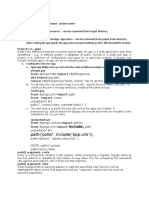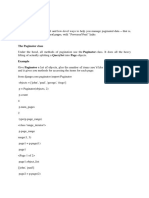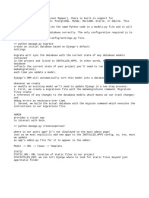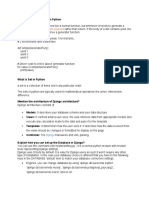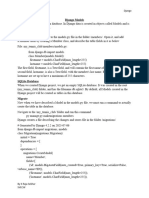0% found this document useful (0 votes)
2 views1 pageDatabase Modelling-Django Colabs
The document discusses database modeling in Django, highlighting the role of models in storing data and how they map to database tables. It explains that each model is a class extending django.db.models.Model, with attributes representing database columns. Additionally, it covers the installation of Pillow for image processing and the importance of managing migrations for tracking database schema evolution.
Uploaded by
Ngaga DancanCopyright
© © All Rights Reserved
We take content rights seriously. If you suspect this is your content, claim it here.
Available Formats
Download as DOCX, PDF, TXT or read online on Scribd
0% found this document useful (0 votes)
2 views1 pageDatabase Modelling-Django Colabs
The document discusses database modeling in Django, highlighting the role of models in storing data and how they map to database tables. It explains that each model is a class extending django.db.models.Model, with attributes representing database columns. Additionally, it covers the installation of Pillow for image processing and the importance of managing migrations for tracking database schema evolution.
Uploaded by
Ngaga DancanCopyright
© © All Rights Reserved
We take content rights seriously. If you suspect this is your content, claim it here.
Available Formats
Download as DOCX, PDF, TXT or read online on Scribd
/ 1





















